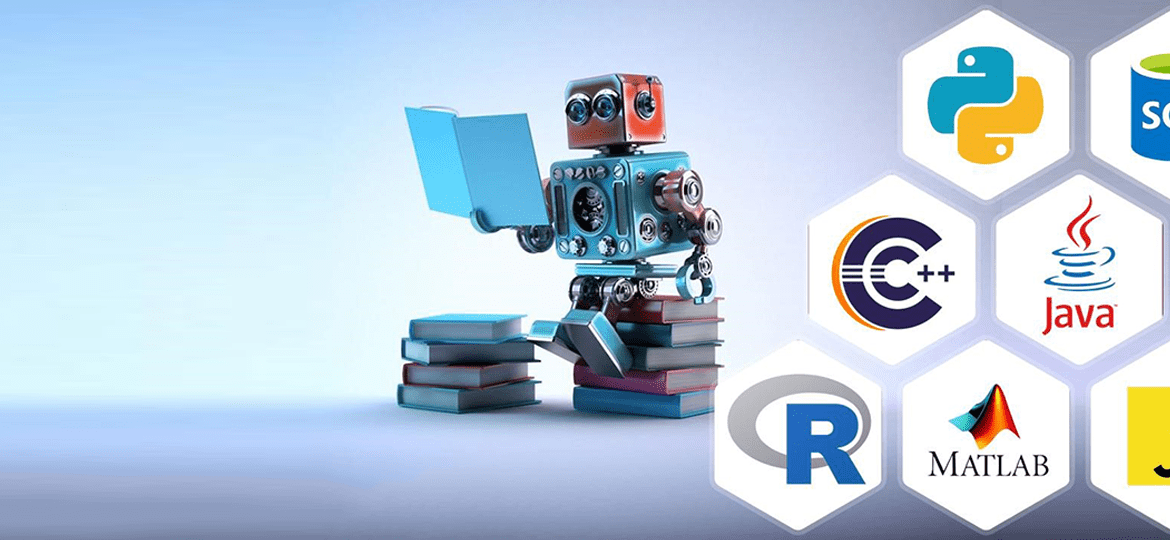
Which language to use in machine learning?
With all the hype and craze around Machine Learning, technology forums and discussion sites for data enthusiasts are buzzing with one question “Which is the best language for machine learning?”
There is no dearth of resources- articles, journals and such, attempting to answer this question. The answers are usually based on the writer’s own experience or an extrapolation from job offer data. But it is important to take into account that there is a lot of activity in machine learning than what job offers can describe. However, we are not overlooking the importance of peer opinions, only those that seem conflicting and may confuse the newbies. Instead, we turned to hard data from scientists, experts and machine learning developers.
The data is all about the languages they use and projects they’re working on, including details on some of the interesting stuff in machine learning that they came across during all the activities and training. This data helped us sort out some of the important factors that are related to language selection, commonly employed by industry people. We poured over the top few languages and were surprised to find that the answer to the question of “which language?” wasn’t that simple.
Which machine learning language is the most popular overall?
From our research, we shortlisted 5 languages based on the popularity of each. Python tops the list, with 57% of data engineers and AI developers using it. 33% of people feel it is most preferred for development. No surprise here, given the improvements in the Natural Language Processing (NLP) and all the deep learning Python frameworks in the last few years, including the release of the famous TensorFlow and a wide selection of other libraries.
One language Python is often compared to, R. But in terms of popularity, the lines are drawn: R comes fourth in overall usage (31%) and fifth in prioritization (5%).
Not only is Python a widely accepted language, it is also the primary choice for most of its users.
C/C++ is a close second to Python, with a popularity of 44% and a lower prioritization rate (19%). Java comes next, while JavaScript comes fifth in usage.
While Julia, Scala, Ruby, MATLAB etc. have been making some noise lately, they all fall below the 5% mark when it comes to prioritization and below 26% of usage.
Why choose Python over the others?
“Python is the Swiss Army Knife of coding”
This is true thanks to its versatility, uniform syntax and a language setup that mirrors humans, making it one of the simplest languages for a beginner to work with its.
The syntax of Python has been described as both “elegant” and also “math-like.” Users feel that Python has a particular set of tools that come in handy while working with machine learning systems. They usually cite the availability of an array of frameworks and libraries, along with extensions like NumPy. These accessories aid in easier task implementation. So, in the context of the programming language itself, these applied uses make it a more popular language.
A very helpful resource is a sci-kit module called “machine learning in Python,” which in its element, is a perfect guiding tool for users in the machine learning environment. Finally, the ease of use, a quality Python is famous for, makes for better collaborative coding and implementation. And being a general-purpose language, Python can do a lot of things easily, which particularly helps when working with a complex set of machine learning tasks
Natural language processing
On the natural language processing (NLP) front, the first generation of NLP integration is said to have been written in Python. Natural Language Toolkit’s (NLTK) first release was in 2001 itself, a good five years before its Java-based competitor Stanford Library NLP. Since then it has been serving as a comprehensive resource to enable chatbots to leverage the best functions of NLP.
As an interesting alternative for Java users, the Stanford NLP and Apache Open NLP are also available, that can easily support chatbots. But NLTK is superior in many ways. It has additional features like support for multiple languages, versions, and interfaces for other NLP tools. It even allows the user to install select Stanford NLP packages and third-party Java projects.
Python is preferred in many areas of application over Java:
Another decisive factor we came across when selecting a language for machine learning is the type of project you’ll be working on or more simply, your area of application.
Machine learning developers working on sentiment analysis prioritize Python at 44% followed by R (11%), Java (15%) and JavaScript (2%). In contrast, Java is preferred by those working on cybersecurity, network security, and fraud detection. Security features are considered to be the Achilles heel for Python according to some industry experts.
This is particularly attributed to the fact that Network security and related algorithms mostly used by large organizations where Java is the clear favorite. In areas that are less enterprise-focused, such as natural language processing (NLP) and sentiment analysis, developers opt for Python which offers an easier and faster way to build highly-performing algorithms, due to the extensive collection of specialized libraries that come with it.
A few negatives to round up
One of Python’s biggest drawbacks lies in its documentation process, which starkly overshadows the downsides of other languages like R, Java, and C++. This may be the reason for its reduced preference in Artificial Intelligence (AI) in games (29%) and robot locomotion (27%). C/C++ comes with highly sophisticated AI libraries is the most preferred, while R, designed for statistical analysis and visualizations, is considered mostly irrelevant.
The huge list of benefits backed by a broad support/community makes Python a frequently sought after language skill in the tech world. So, if you are starting out fresh or just wondering which language is worth investigating for your venture into the machine world, giving Python a go is a good choice.

